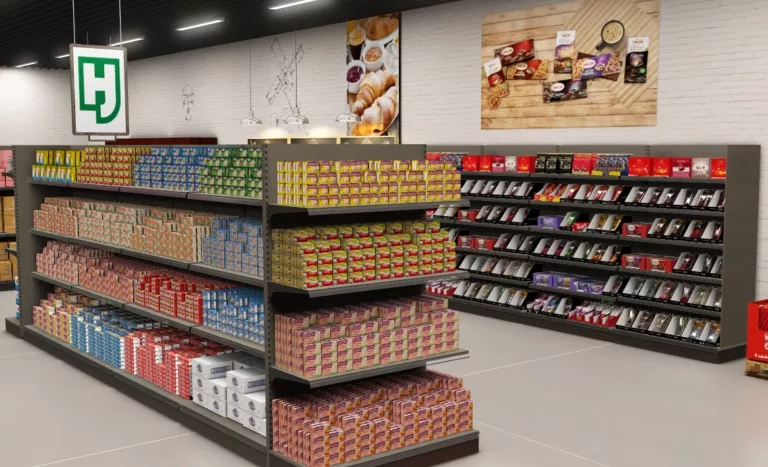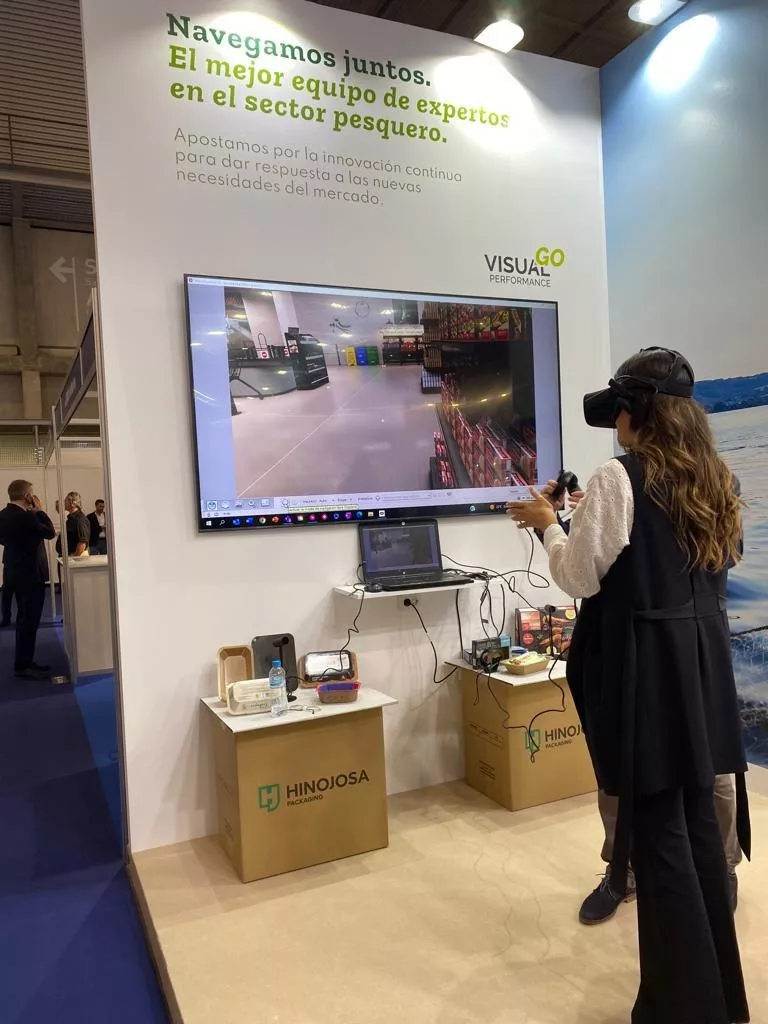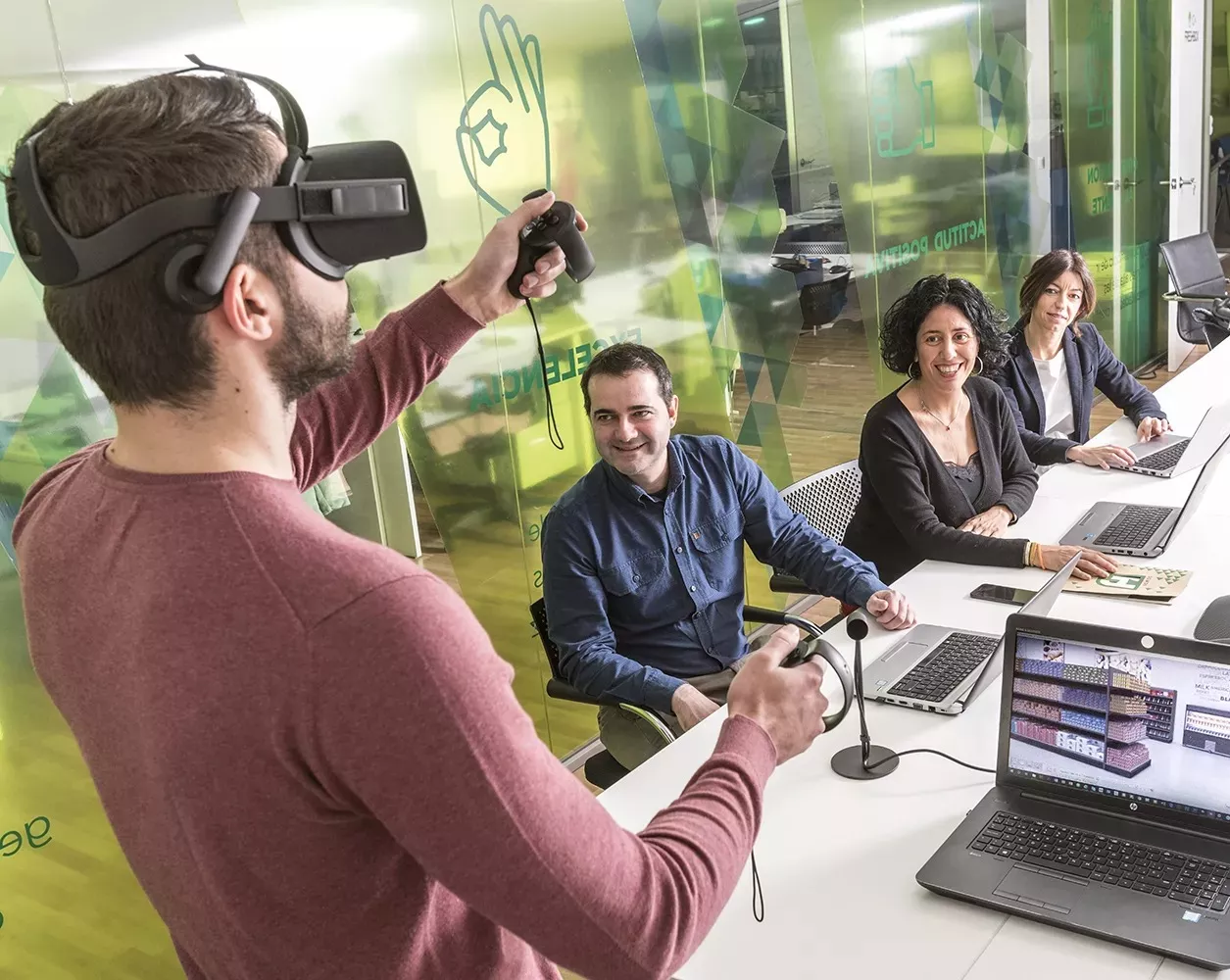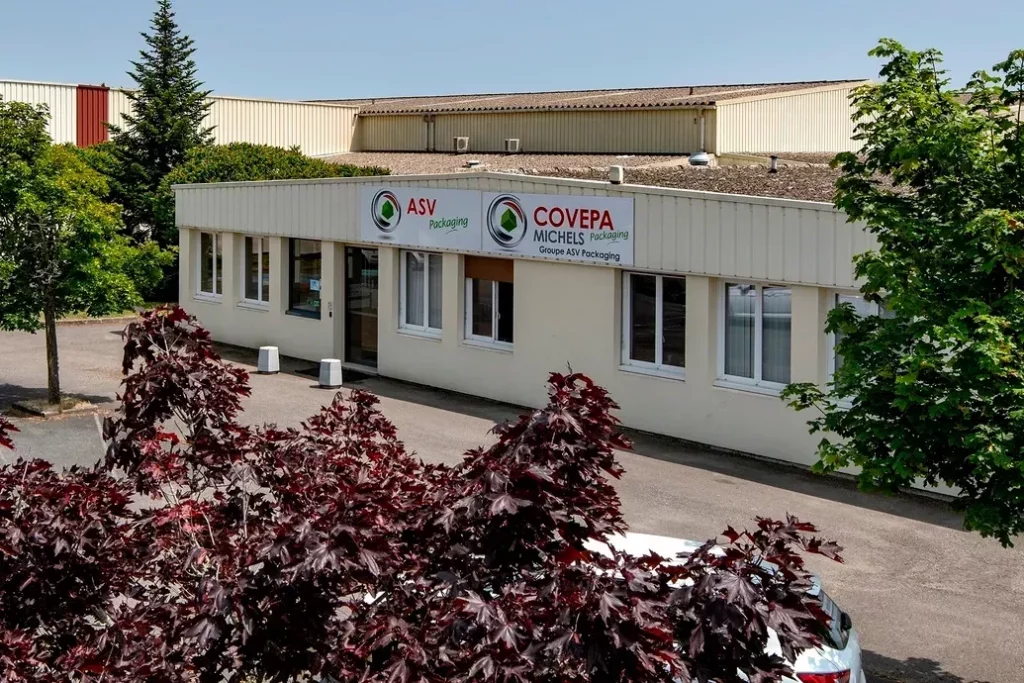The placement of the product on supermarket shelves, its design and colours and the messages printed on the packaging are all factors that determine its relationship with the customer and condition the popularity of the product. On the shelf, packaging has a very limited time to make an impression on the consumer, who spends only 20 seconds in front of the shelves and 5 seconds more to choose the product.
To address the challenge of designing and producing packaging prototypes prior to commercialisation and maximising the full potential of the item in that short period of time, Hinojosa has designed Visual Performance Go, a virtual reality tool that simulates supermarket shelves and allows the customer to see the product in its habitat, to know what it looks like alongside competitors’ products, to view its features and see whether it stands out among other items.

Virtual reality, often associated with the field of entertainment, is making inroads in the packaging industry through tools such as this one. Visual Performance Go allows us to envision how any product would look and work on the shelves of a large supermarket. “The advantage of this tool is that you can see the product you want to develop, including the colour, how it would fit on the supermarket shelf and if it is more attractive than the competitor’s product. You can pick it up, turn it around and see how the light hits the packaging,” explain Patricia Piuri and Arnau Sales, specialists in the Procurement Department of Ametller Origen, who had the opportunity to experiment with this tool at the Seafood Exposition and use it to preview containers such as Halopack.

With this innovative technological initiative, the customer can live check the changes needed or the features to be enhanced in their packaging long before they imply a budgetary expense. This anticipation is also a plus point in terms of sustainability as it avoids the production of faile packaging. “Visual Performance Go allows quick action, envisioning the product alongside a competitor’s product and identifying the best in class, to redesign and implement improvements before undertaking any investment”, maintains Fernando Ochoa, Head of Procurement at Ametller Origen.
Moreover, its flexibility and portability make it an indispensable tool for packaging design in the future. “I believe it has great potential and that it will evolve even further, for instance, so that the user will be able modify features of the packaging during the viewing. A category manager knows what they want to see on the shelves, and this tool will allow them to translate the idea in their mind into reality”, adds Ochoa.



